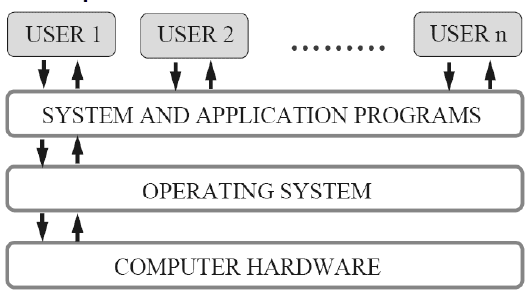Memory vs Processor
Memory vs Processor: Which is
Better & How to Choose?
What Is Memory?
What Is Memory?
Usually, when we talk
about memory, we refer to the Random-access Memory (RAM). It is a kind of
computer memory storage, which can be read and written in any order. Usually,
the memory is for saving machine code as well as working data. It is used as a
short-term data storage space for the computer to place data it is currently
working on. The more RAM a PC has, the more data it can handle at a shorter
time.
About Processor
A processor, usually
known as a central processing unit (CPU), central processor, or main processor
in computing hardware, is the electronic circuitry within a computer that
executes instructions making up programs.
Actually, the processor
is only the processing unit, including the arithmetic logic unit (ALU) and
registers, within a CPU. The more powerful and updated your processor, the
faster your machine is. There is also a control unit that consists of the CPU.
Right next to the CPU, the RAM or main memory locates. Read more details in CPU
architecture.
Memory vs Processor: How
They Cooperate with Each Other?
In general, the
processor performs basic arithmetic, logic, controlling, and I/O (input/output)
operations specified by the instructions in a program and the instructions are
stored in the memory. CPUs fetch, decode, and execute operations; those steps
are called the instruction cycle.
First of all, the
processor fetches instructions from the memory. Then, it decodes the
instructions into signals that control other parts of the CPU. Finally, the CPU
components work together to execute the instructions and write the result into
the main memory.
Therefore, the
relationship between memory and processor is just like partners. They are
reliant and complementary to the other, and they work together to processing
and storing computer digital data.
Processor vs Memory Speed
Just as mentioned in
the above, the processor is a functioning computer component. Within it, there
are registers, locations that can be accessed by a processor quickly. Usually,
processor registers consist of a small amount of fast storage for containing
the load data from the main memory. There, the data is used for arithmetic
operations and is manipulated or tested by machine instructions. Then, the data
will be sent back to the main memory.
In computer
architecture, usually, processor registers are addressed by mechanisms instead
of the memory. Yet, in some cases, the registers may be assigned with memory
addresses. Modern processors make use of either static or dynamic RAM as the
main memory, with the latter usually accessed via 1 or more cache levels. Yet,
processor registers are typically at the top of the memory hierarchy levels.
RAM contains
multiplexing and demultiplexing circuitry for connecting the data lines to the
addressed storage for reading or writing the entry. RAM devices allow data
items to be read or written in almost the same amount of time irrespective of
the physical location of data inside the memory. Thus, it is comparatively fast
to reach target data in RAM than in other storage media like CDs, DVDs, HDDs,
SSDs, etc.
In a conclusion, memory
vs processor speed, the former has a slower speed than the latter.
Processor vs Memory vs
Storage
As direct-access data
storage devices, HDD, SSD, CD/DVD, magnetic tapes, and drum memory, the time
required to read and write data items varies largely depending on their
physical locations on the recording entities, due to the mechanical limitations
like media rotation speeds and arm movement.




Comments
Post a Comment